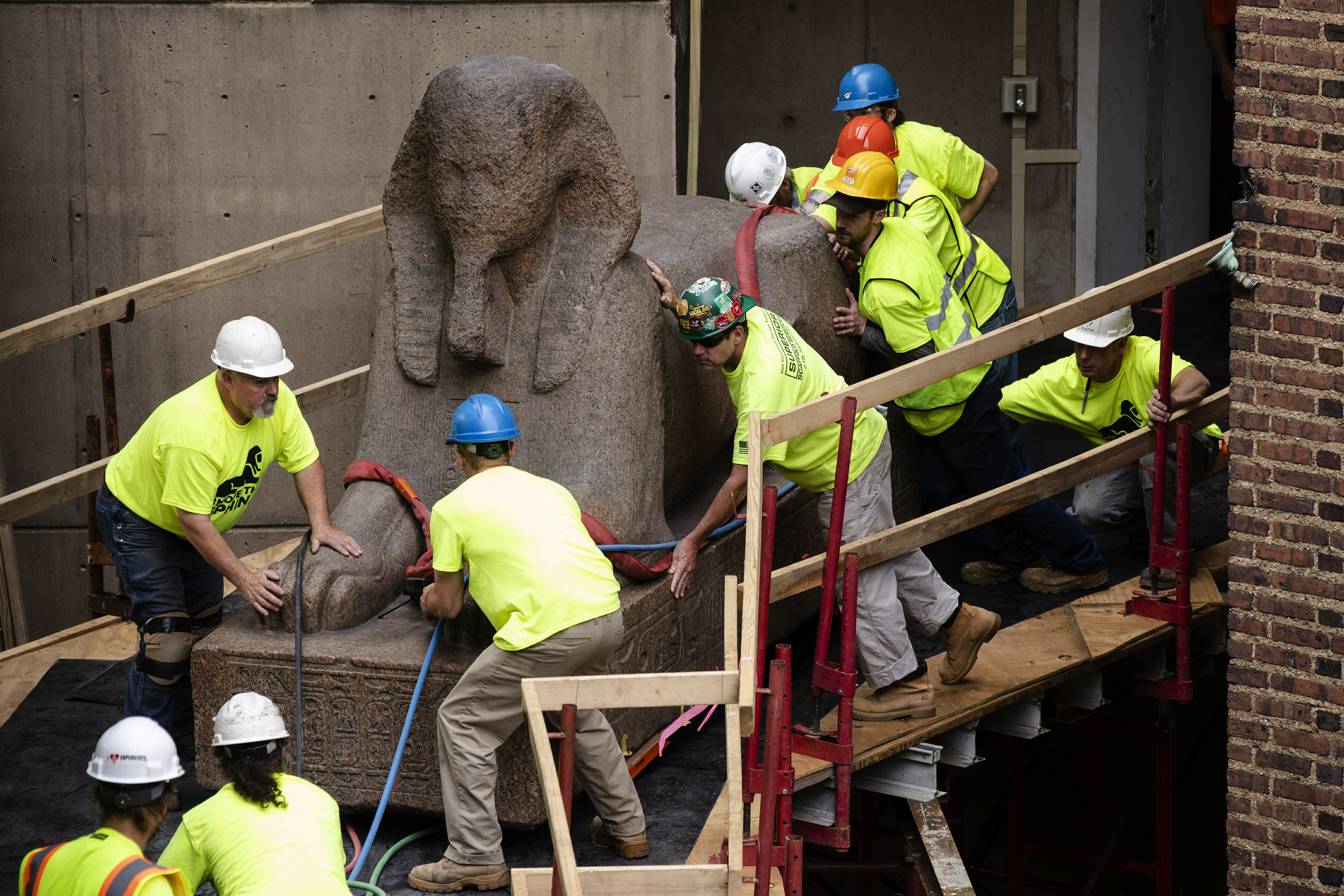
Huge sphinx makes crawling journey to new spot in museum
The largest ancient sphinx in the Western Hemisphere was on the prowl Wednesday for the first time in nearly 100 years.
Philadelphia’s Penn Museum relocated its 3,000-year-old sphinx of Pharaoh Ramses II from the Egypt gallery, where it had resided since 1926, to a featured location in the museum’s new entrance hall.
Workers used air dollies to painstakingly maneuver the priceless artifact up a specially constructed ramp and through a series of doorways, windows, sharp turns and tight squeezes, a distance of about 250 feet (76 meters).
The sphinx was as inscrutable as ever throughout. Museum officials, on the other hand, were a little more animated.
“It’s been extremely exciting and nerve-wracking, too. I’ll sleep a lot better tonight,” said director Julian Siggers, adding the sphinx was insured for an “eye-wateringly high figure.”
The monument, which was carved out of a single block of red granite and has the head of a man and the body of a lion, was unearthed in 1913 by famed British archaeologist Sir William Matthew Flinders Petrie, whose excavations the museum funded. It was relocated as part of the museum’s extensive, multi-year makeover.
“We needed something very powerful right when you walked into this renovated space, and that is when we said, ‘What a shame we can’t have the sphinx here. It would be perfect,’ Siggers said. “The received wisdom was it was impossible to move.”
The museum’s unofficial mascot underwent 3-D imaging to determine its weight (25,000 pounds, 11,340 kilograms) and density so that engineers could determine what would be required to move it.
As predicted, Wednesday’s journey took several hours. It’ll be lifted onto its new base Thursday.
“This move was so carefully orchestrated,” said associate curator Jennifer Houser Wegner, who co-wrote a book on the sphinx. “I felt very confident, knock wood, that things would go according to plan.”
The Western Journal has not reviewed this Associated Press story prior to publication. Therefore, it may contain editorial bias or may in some other way not meet our normal editorial standards. It is provided to our readers as a service from The Western Journal.
Truth and Accuracy
We are committed to truth and accuracy in all of our journalism. Read our editorial standards.
Advertise with The Western Journal and reach millions of highly engaged readers, while supporting our work. Advertise Today.












